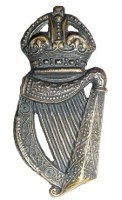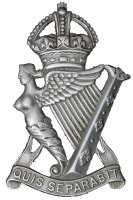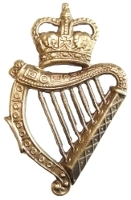(London Irish)
Rifle Volunteer Corps
│
of the Volunteer Force
(London Irish)
Rifle Volunteer Corps

│
regiments by the Childers reforms
| volunteer battalion of The Prince Consort’s Own (The Rifle Brigade) |
(London Irish)
Volunteer Rifle Corps
│
The London Regiment
(London Irish Rifles) (TF)

│
1918:
2/18th (County of London) Battalion,
3/18th (County of London) Battalion,
The London Regiment
(London Irish Rifles)
│
| transferred to The Royal Irish Rifles |
The London Regiment
(London Irish Rifles) (TF)
│
(London Irish Rifles) (TA)
│
The Royal Ulster Rifles (TA)

│


London Irish Rifles,
The Royal Ulster Rifles (TA)
│
│
│
London Irish Rifles,
The Royal Ulster Rifles (TA)
│
│
│



The Royal Ulster Rifles (TA)
The Royal Ulster Rifles (TA)

│

│

│

│
D Company (London Irish Rifles),
The North Irish Militia
B Company (Royal Ulster Rifles),
The North Irish Militia
and
A Company,
B Company,
6th (Territorial) Battalion
The Royal Ulster Rifles
D (London Irish Rifles) Company,
The Queen’s Fusiliers
│
The London Regiment